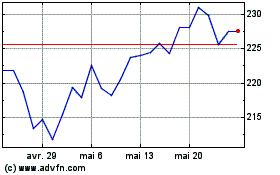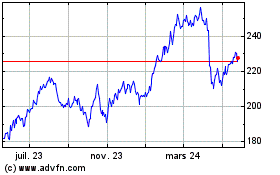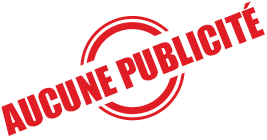Middle-income Americans remain concerned about inflation and the
high cost of living, with many saying their income is not keeping
pace, according to Primerica’s latest Financial Security Monitor™
(FSM™). While some respondents express signs of cautious optimism,
the lingering effects of inflation continue to shape how
middle-income families manage their money and plan for the
future.
This press release features multimedia. View
the full release here:
https://www.businesswire.com/news/home/20250130090365/en/
Primerica Household Budget Index™ (HBI™),
an economic snapshot solely focused on the financial well-being of
middle-income households, found the average purchasing power of
middle-income families rose to 100.9% in December 2024, a 1.1%
increase compared to a year ago and 0.2% from November 2024.
Falling gas prices and income gains, which rose 4% year-over-year,
served as the main drivers for the modest improvement. (Graphic:
Business Wire)
“Small improvements in the purchasing power of middle-income
Americans are not impacting how they are feeling about their
financial futures,” said Glenn J. Williams, CEO of Primerica. “They
are still feeling the pinch of not being able to make ends meet
over the past few years.”
The latest Primerica Household Budget Index™ (HBI™), an economic
snapshot solely focused on the financial well-being of
middle-income households, found the average purchasing power of
middle-income families rose to 100.9% in December 2024, a 1.1%
increase compared to a year ago and 0.2% from November 2024.
Falling gas prices and income gains, which rose 4% year-over-year,
served as the main drivers for the modest improvement.
“We are in a new paradigm of permanently higher prices that
consumers have not yet adjusted to emotionally and, in some cases,
financially, and where a person is in their life can impact that
even further,” said Amy Crews Cutts, Ph.D., CBE®, an economist who
consults for Primerica. “Millennials are at peak ‘adulting’ ages,
when they would typically buy homes, start families, etc., but the
highest inflation and interest rates in their lifetimes coupled
with the high costs of homes and cars and child care are limiting
their options. Their pessimism is grounded by their unique
experiences.”
Key Findings from Primerica’s Q4 U.S. Middle-Income Financial
Security Monitor™ (FSM™)
- Cost of living continues to stress middle-income
Americans. About 65% of respondents stated their income is not
keeping up with the cost of living, marking the 14th consecutive
quarter this figure has remained at or above this level. Inflation
remains a dominant concern for middle-income Americans, with about
half (51%) of respondents feeling stressed about the rising cost of
living.
- Majority rate financial outlook negatively. About 65% of
respondents reported they would be worse off or the same
financially in the next year, with a majority (55%) rating the
condition of their personal finances negatively.
- Generational differences reveal notable variations in
financial sentiment. About 57% of middle-income Americans
report feeling stressed about money and finances, with notable
differences across generations. The generations that experience a
higher frequency of life events reported significantly higher
stress levels — 75% of Millennials, 62% of Gen X and 61% of Gen Z —
compared to only 39% of Baby Boomers. Importantly, those who work
with a financial professional are more likely to feel hopeful and
confident.
- Social media plays a limited role in where middle-income
Americans go for financial advice. A majority (63%) of
respondents do not use social media for financial information.
Among those who do, Facebook (18%), YouTube (17%) and Instagram
(14%) are the most popular platforms. However, a majority (59%) of
Gen Zers do use such platforms, with YouTube (32%), Instagram (22%)
and Reddit (23%) being the most popular sites.
Primerica Financial Security Monitor™ (FSM™) Topline Trends
Data
Dec 2024
Sept 2024
Jun
2024
Mar
2024
Dec
2023
Sept
2023
Jun
2023
Mar
2023
Dec
2022
How would you rate the condition of
your personal finances? Share reporting “Excellent” or
“Good.”
45%
44%
49%
50%
50%
49%
50%
52%
53%
Analysis: Respondents are more negative
in their assessment of their personal finances than a year
ago.
Overall, would you say your income
is…?
Share reporting “Falling behind the
cost of living”
65%
68%
66%
67%
68%
72%
71%
72%
72%
Share reporting “Stayed about even with
the cost of living”
29%
24%
26%
25%
24%
20%
22%
21%
20%
Analysis: Concern about meeting the
increased cost of living remained steady with 93% noting an
inability to get ahead.
And in the next year, do you think the
American economy will be…?
Share reporting “Worse off than it is
now”
55%
25%
40%
46%
53%
56%
57%
53%
56%
Share reporting “Uncertain”
9%
34%
19%
18%
9%
9%
9%
7%
8%
Analysis: Although the share of
respondents expecting the economy to worsen over the next year has
risen sharply since the previous poll, the figure remains
consistent with levels seen a year ago.
Do you have an emergency fund that
would cover an expense of $1,000 or more (for example, if your car
broke down or you had a large medical bill)? (Reporting “Yes”
responses.)
59%
61%
63%
62%
60%
62%
61%
58%
59%
Analysis: The percentage of Americans
who have an emergency fund that would cover an expense of $1,000 or
more has remained steady over the past year.
How would you rate the economic health
of your community? (Reporting “Not so good” and “Poor”
responses.)
63%
63%
58%
60%
57%
55%
54%
59%
53%
Analysis: Respondents’ rating of the
economic health of their communities has gotten worse over the past
year.
How would you rate your ability to save
for the future? (Reporting “Not so good” and “Poor”
responses.)
71%
73%
68%
67%
73%
71%
71%
73%
74%
Analysis: A significant majority
continue to feel it is difficult to save for the future.
In the past three months, has your
credit card debt…? (Reporting “Increased” responses.)
34%
35%
30%
34%
35%
34%
33%
33%
39%
Analysis: Credit card debt has remained
about the same over the past year.
About Primerica’s Middle-Income Financial Security Monitor™
(FSM™)
Since September 2020, the Primerica Financial Security Monitor™
has surveyed middle-income households quarterly to gain a clear
picture of their financial situation, and it coincides with the
release of the monthly HBI™ four times annually. Polling was
conducted online from Dec. 20-23, 2024. Using Dynamic Online
Sampling, Change Research polled 1,085 adults nationwide with
incomes between $30,000 and $130,000. Post-stratification weights
were made on gender, age, race, education and Census region to
reflect the population of these adults based on the five-year
averages in the 2021 American Community Survey, published by the
U.S. Census. The margin of error is 3.2%. For more information
visit Primerica.com/public/financial-security-monitor.html.
About the Primerica Household Budget Index™ (HBI™)
The Primerica Household Budget Index™ (HBI™) is constructed
monthly on behalf of Primerica by its chief economic consultant Amy
Crews Cutts, PhD, CBE®. The index measures the purchasing power of
middle-income families with household incomes from $30,000 to
$130,000 and is developed using data from the U.S. Bureau of Labor
Statistics, the U.S. Bureau of the Census, and the Federal Reserve
Bank of Kansas City. The index looks at the cost of necessities
including food, gas, auto insurance, utilities, and health care and
earned income to track differences in inflation and wage
growth.
The HBI™ uses January 2019 as its baseline, with the value set
to 100% at that point in time.
Periodically, prior HBI™ values may be modified due to revisions
in the CPI series and Consumer Expenditure Survey releases by the
U.S. Bureau of Labor Statistics (BLS). Beginning with the December
2024 release of the index, the expenditure weights have been
updated to the most recent (Q1 2024) data and auto insurance has
been added to the group of necessity items. For more information
visit householdbudgetindex.com.
About Primerica, Inc.
Primerica, Inc., headquartered in Duluth, GA, is a leading
provider of financial products and services to middle-income
households in North America. Independent licensed representatives
educate Primerica clients about how to better prepare for a more
secure financial future by assessing their needs and providing
appropriate solutions through term life insurance, which we
underwrite, and mutual funds, annuities and other financial
products, which we distribute primarily on behalf of third parties.
We insured over 5.5 million lives and had approximately 3.0 million
client investment accounts on December 31, 2024. Primerica, through
its insurance company subsidiaries, was the #2 issuer of Term Life
insurance coverage in the United States and Canada in 2023.
Primerica stock is included in the S&P MidCap 400 and the
Russell 1000 stock indices and is traded on The New York Stock
Exchange under the symbol “PRI”.
View source
version on businesswire.com: https://www.businesswire.com/news/home/20250130090365/en/
Media Contact: Gana Ahn 678-431-9266 Email:
Gana.Ahn@primerica.com
Investor Contact: Nicole Russell 470-564-6663 Email:
Nicole.Russell@primerica.com
Primerica (NYSE:PRI)
Graphique Historique de l'Action
De Jan 2025 à Fév 2025

Primerica (NYSE:PRI)
Graphique Historique de l'Action
De Fév 2024 à Fév 2025


